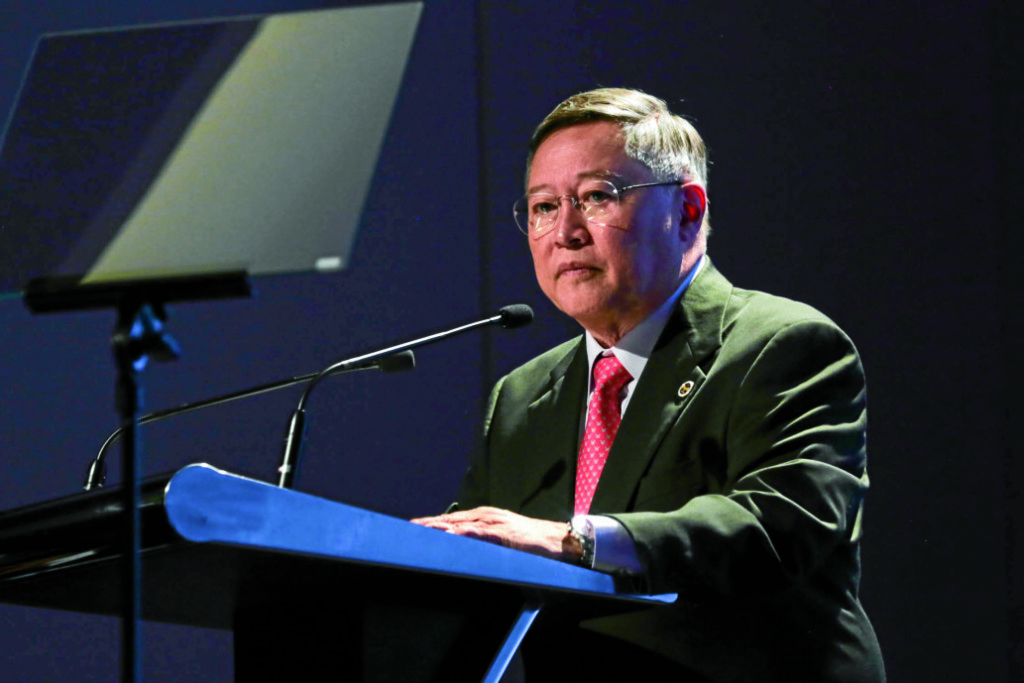Tax reform to shift tax burden to ‘ultra-rich’, claims DOF

Finance Secretary Carlos Dominguez III ALBERT ALCAIN/PRESIDENTIAL PHOTO (FILE)
The Duterte administration’s first tax reform package will shift the burden of taxation to the ultra-rich while easing it for the majority of the population, Finance Secretary Carlos G. Dominguez III said Wednesday.
“The tax reform agenda proposed by the Department of Finance (DOF) is designated to shift the tax burden from the lower 99 percent of the community to the wealthiest 1 percent,” Dominguez said his speech at a tax forum titled “1 with the 99.”
“The reform package will end decades of unjust taxation that polarized wealth rather than distributed it. It will help us build a robust middle class to ensure stability and sustainability in our nation’s progress,” Dominguez added.
The first package of the comprehensive tax reform program approved by the Lower House in May under House Bill No. 5636 will adjust personal income tax brackets to correct “income bracket creeping” by reducing the maximum personal income tax rate to 25 percent over time, save for the “ultra-rich” who would be slapped a higher 35 percent.
HB 4774 contained the DOF’s proposal to lower personal income taxes, broaden the value-added tax base by cutting down on exemptions, increase excise taxes on petroleum and automobiles, as well as reduce the estate and donors’ tax rates.
According to Dominguez, the first tax reform package was “pro-poor not only because of the mix of policies it holds but also because of the consequences it will have for our people.”
READ: Tax reforms hit as antipoor
“The proposed tax reform package will end the complex and vulnerable revenue system we have in place. It will ensure that our tax system is simple, just and efficient. It will ensure government a healthy and recurrent revenue flow to fund education, health and other social services,” Dominguez said.
Also, “the proposed reforms in our tax policy will help us reshape our economic growth so that it becomes more inclusive,” Dominguez added, as he claimed that the measure “will help us end the pattern of wealth concentration that characterized our growth so far.”
Dominguez said that coupled with the “Dutertenomics” thrust of “Build, Build, Build,” tax reform will help the country achieve its vision under the apolitical AmBisyon Natin 2040.
READ: No tax reform, no infra boom
“By bringing our infrastructure and logistics backbone to comparable levels with our neighbors, and by aligning our tax rate to the regional average, we expect to achieve a high-income economy in a generation,” Dominguez said.
A total of at least P8 trillion will be spent by the Duterte administration in the next six years to build vital infrastructure such that infrastructure spending will rise from P847.2 billion or 5.3 percent of the gross domestic product this year to P1.84 trillion or 7.3 percent of GDP in 2022 to usher in a “golden age of infrastructure.”
Launched last year, AmBisyon Natin 2040 was aimed at tripling Filipinos’ per capita income to $11,000 in 24 years’ time by sustaining at least 6.5-percent annual GDP growth alongside the implementation of policies that would make the Philippines a high-income country by 2040.
Last October, President Rodrigo Duterte signed Executive Order (EO) No. 5, which adopted the AmBisyon Natin 2040 as the long-term vision for the Philippines, such that “by 2040, the Philippines shall be a prosperous, predominantly middle-class society where no one is poor.”